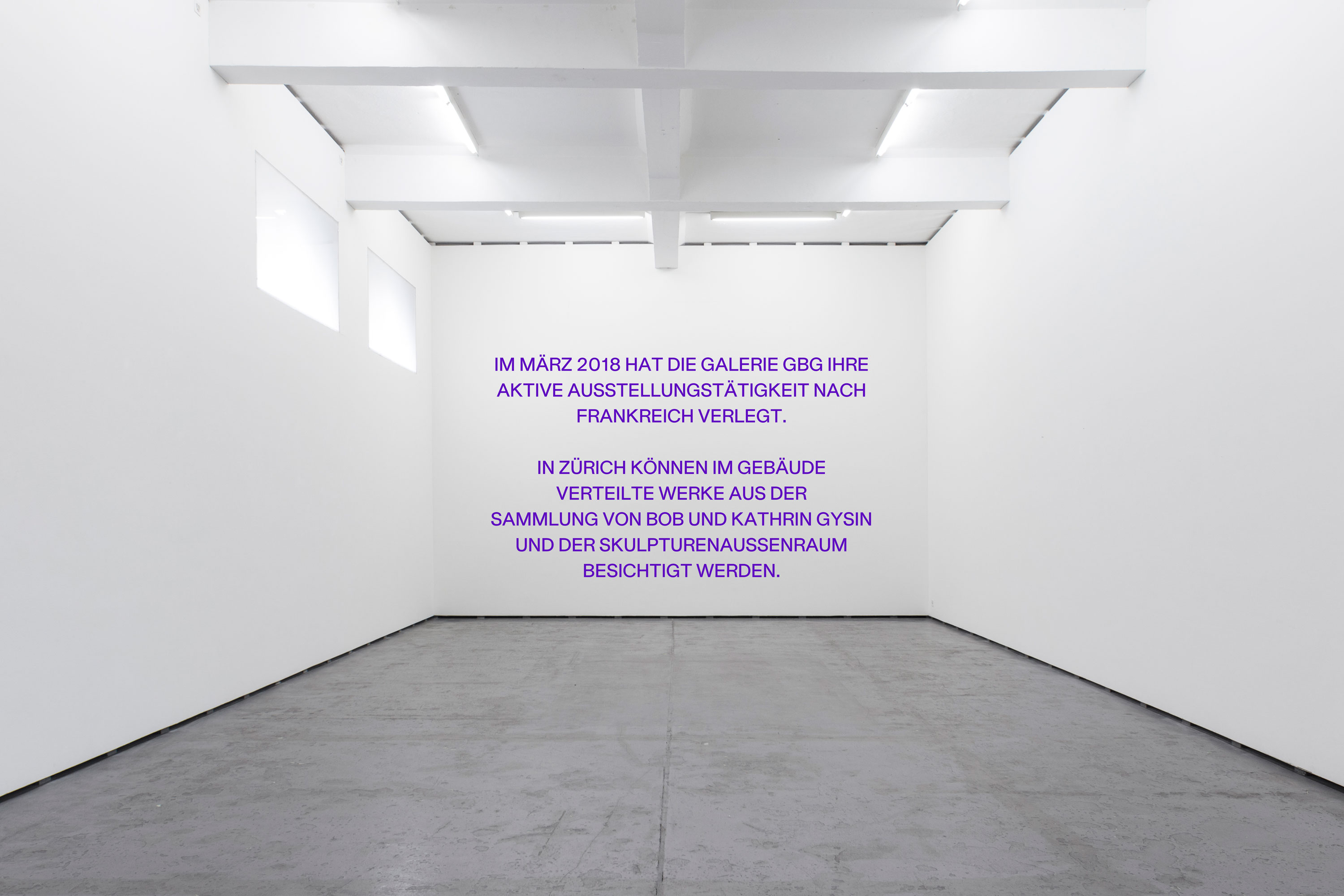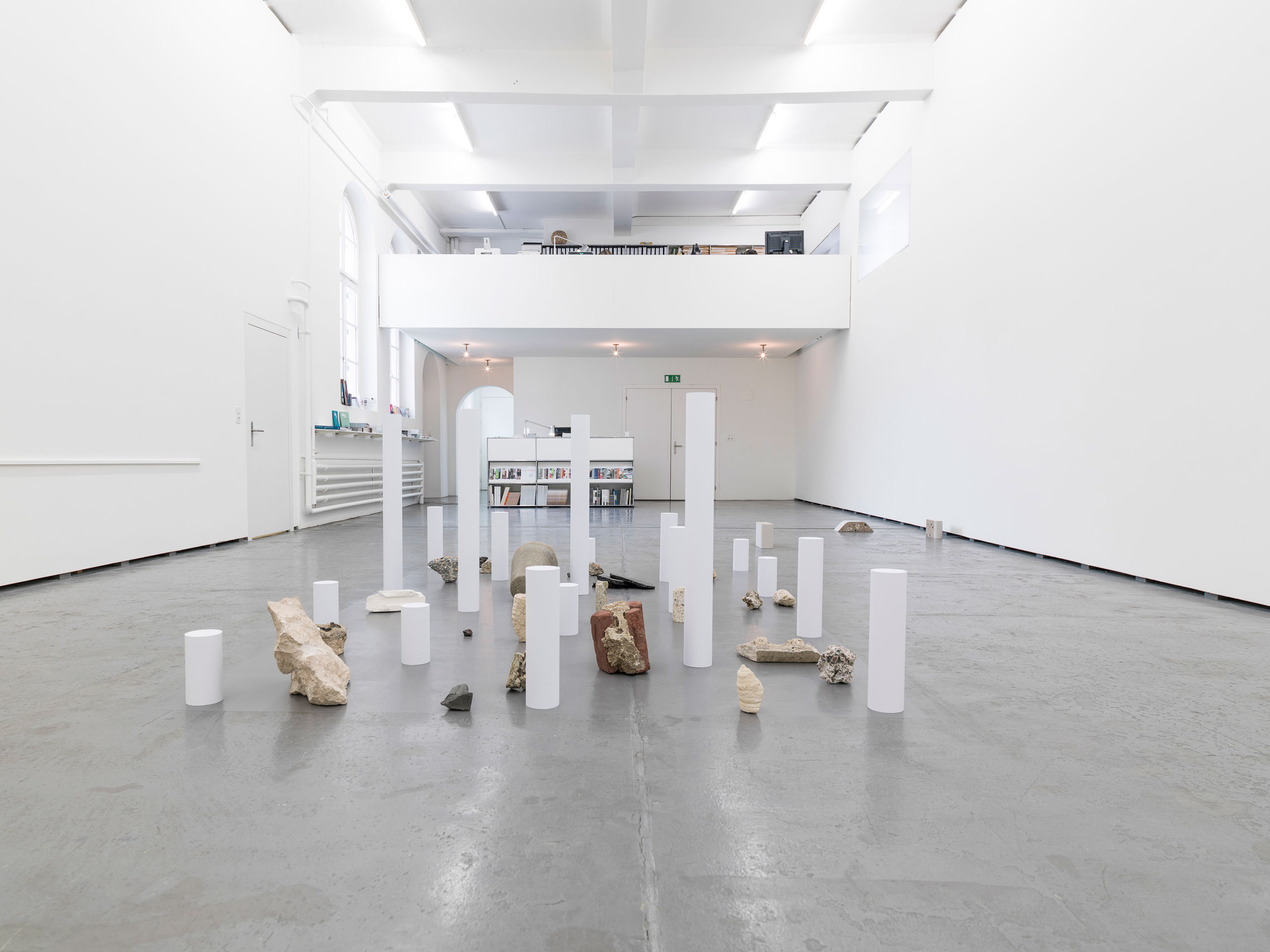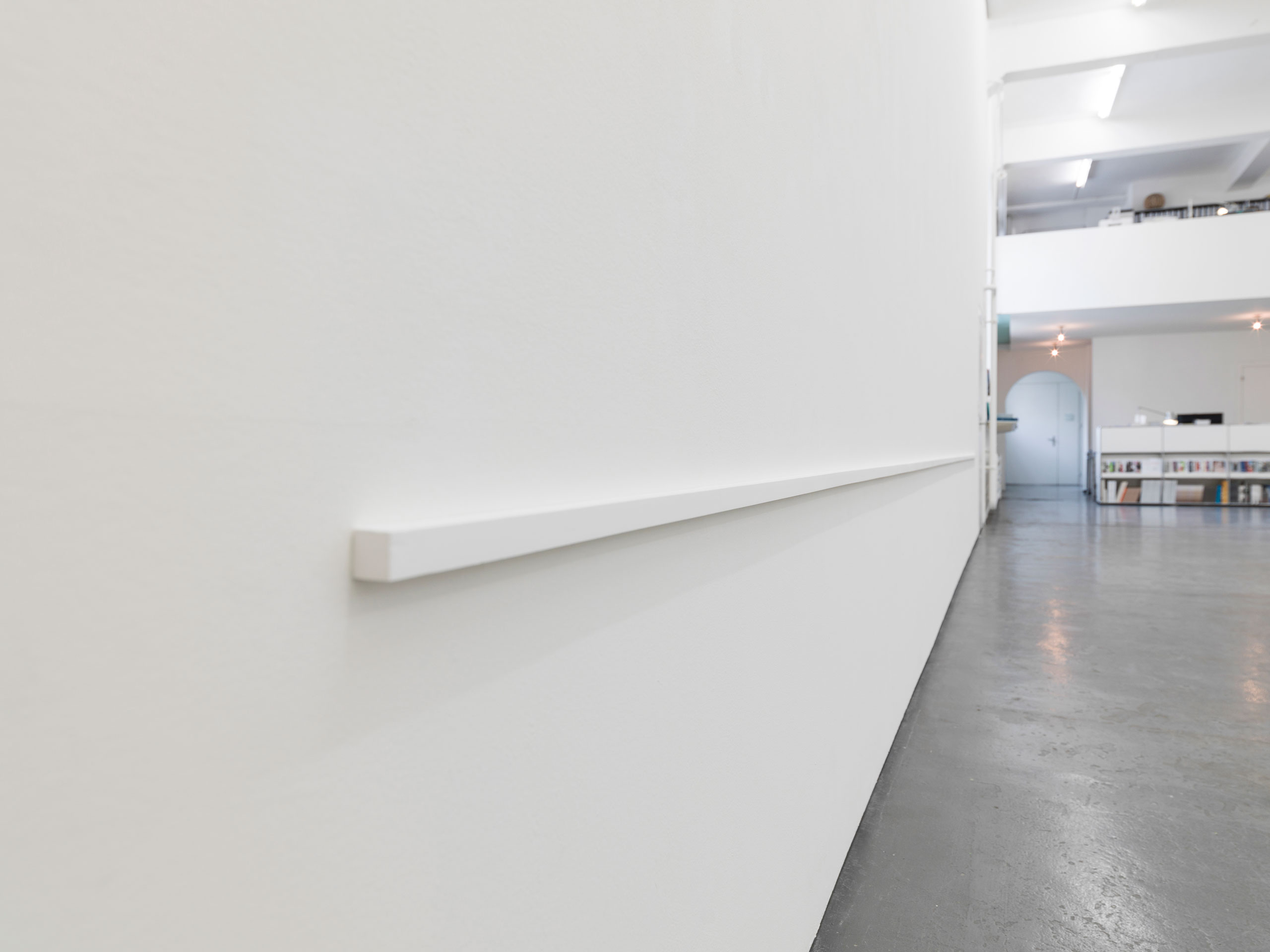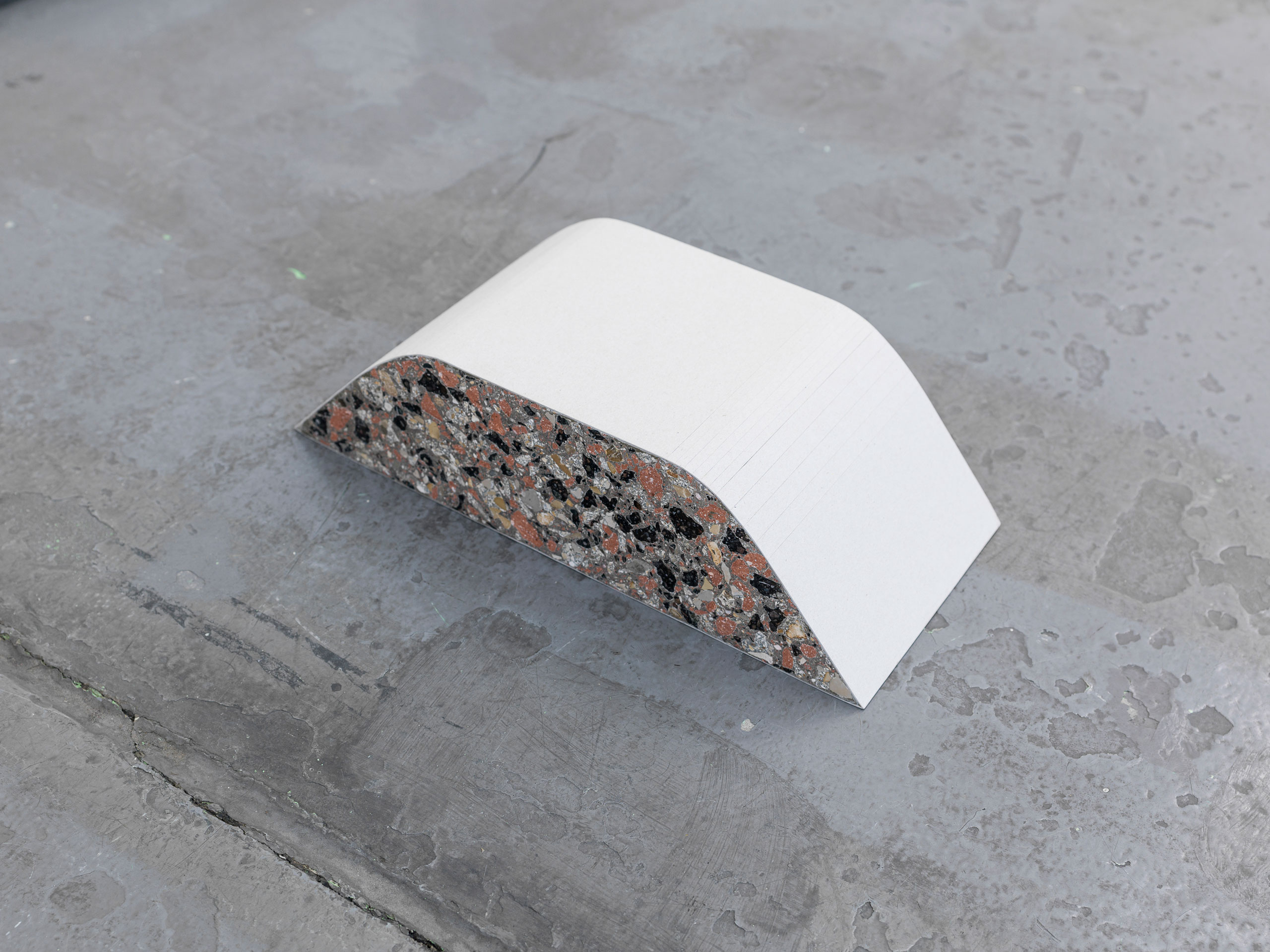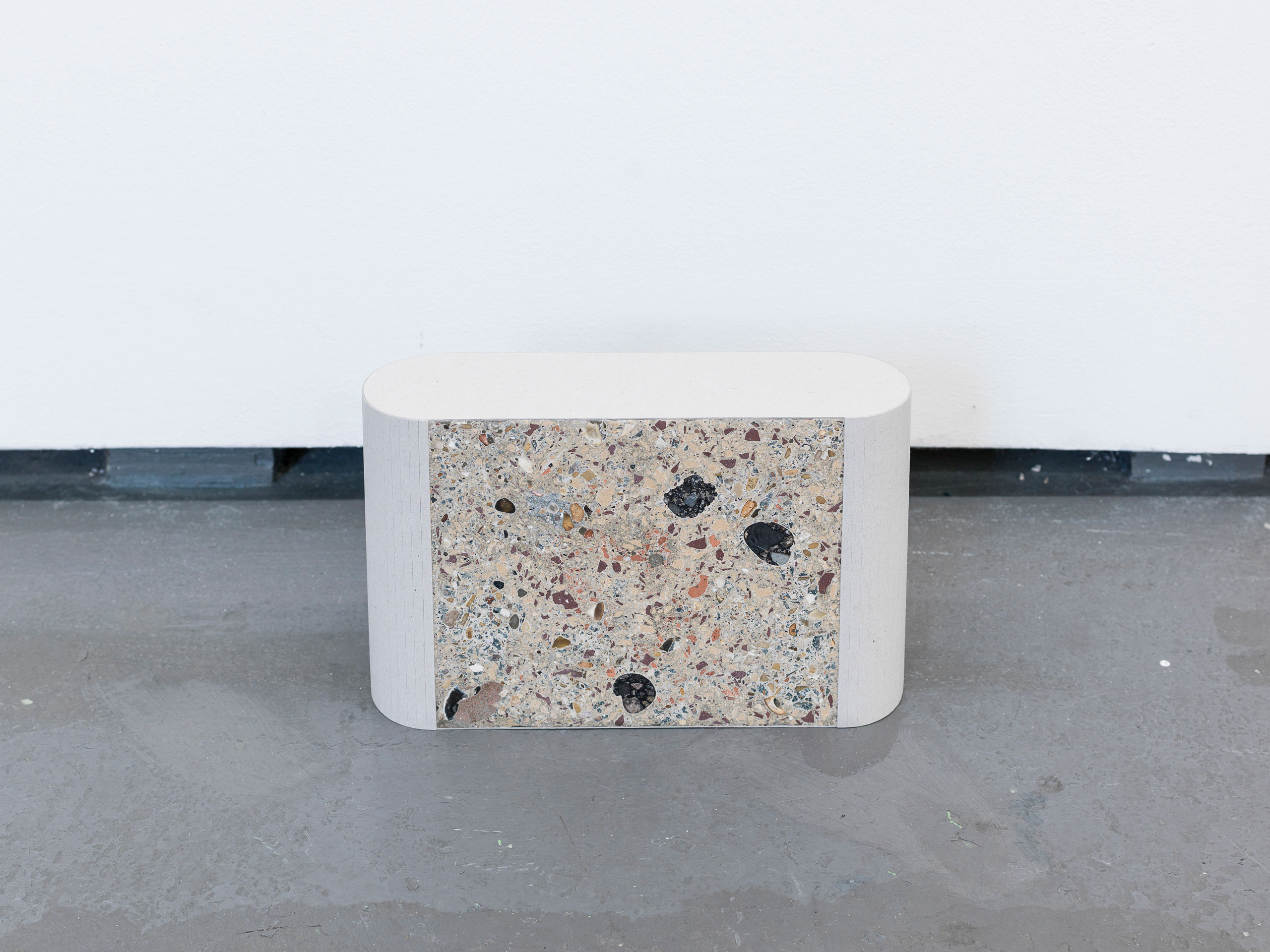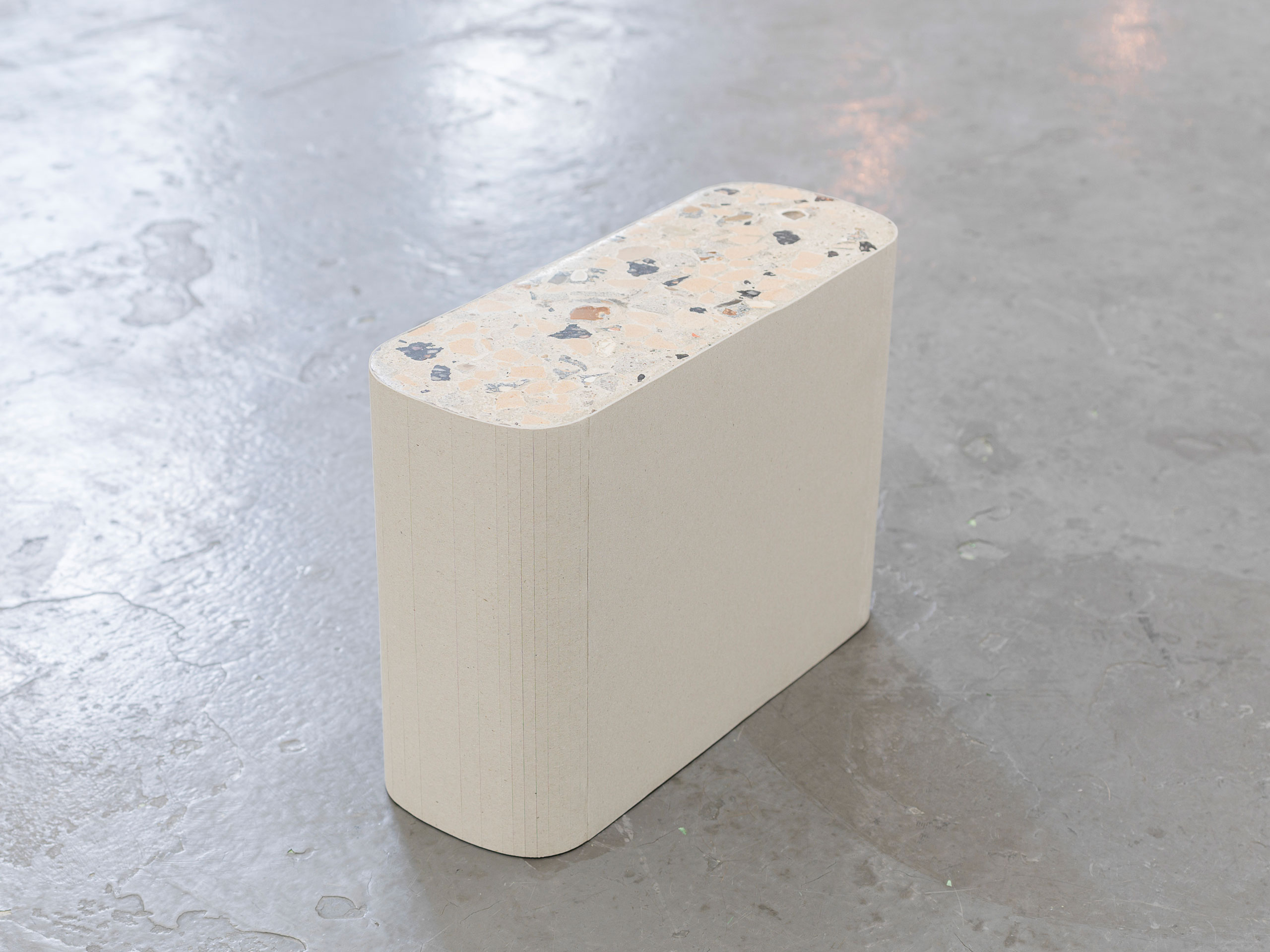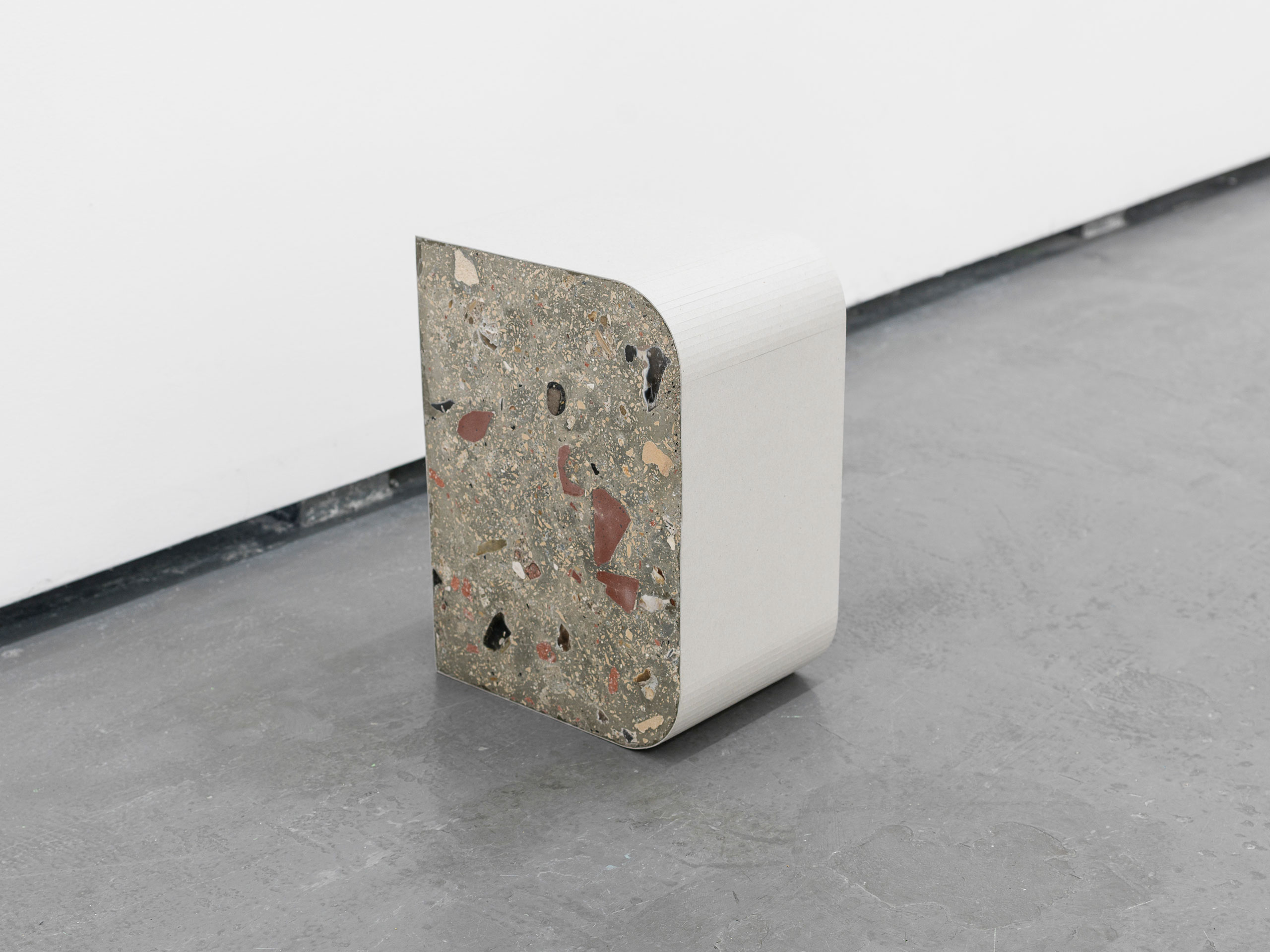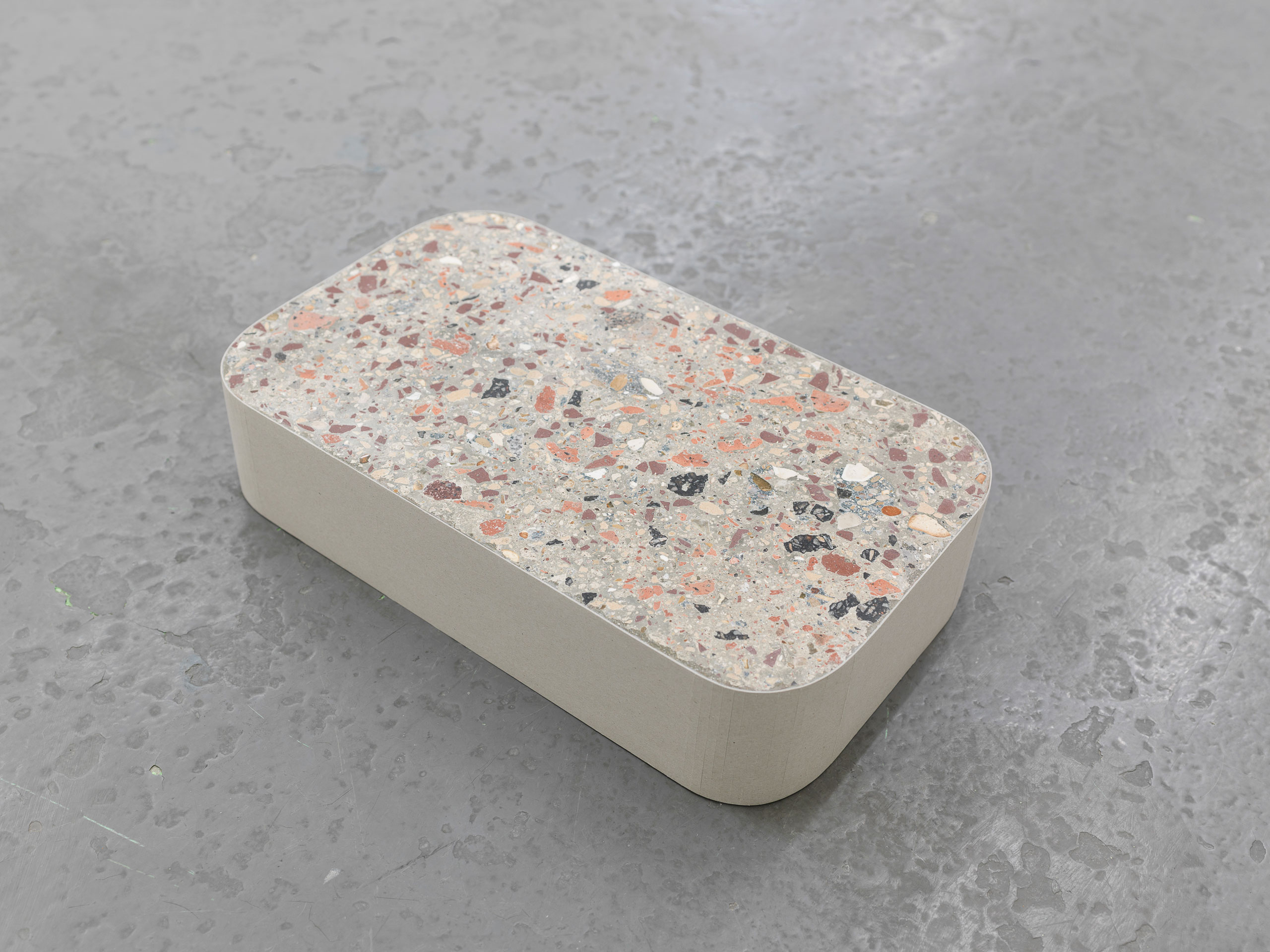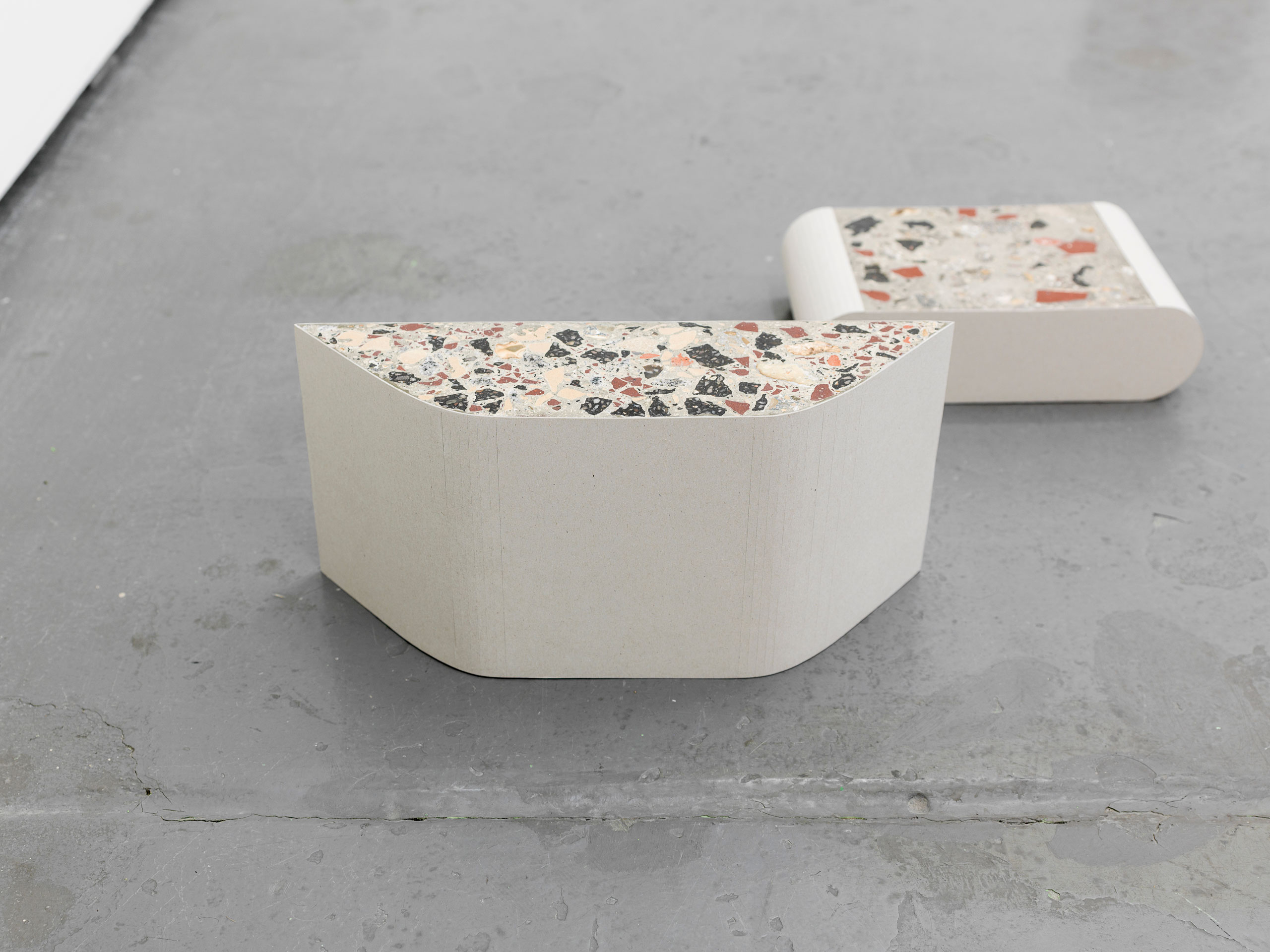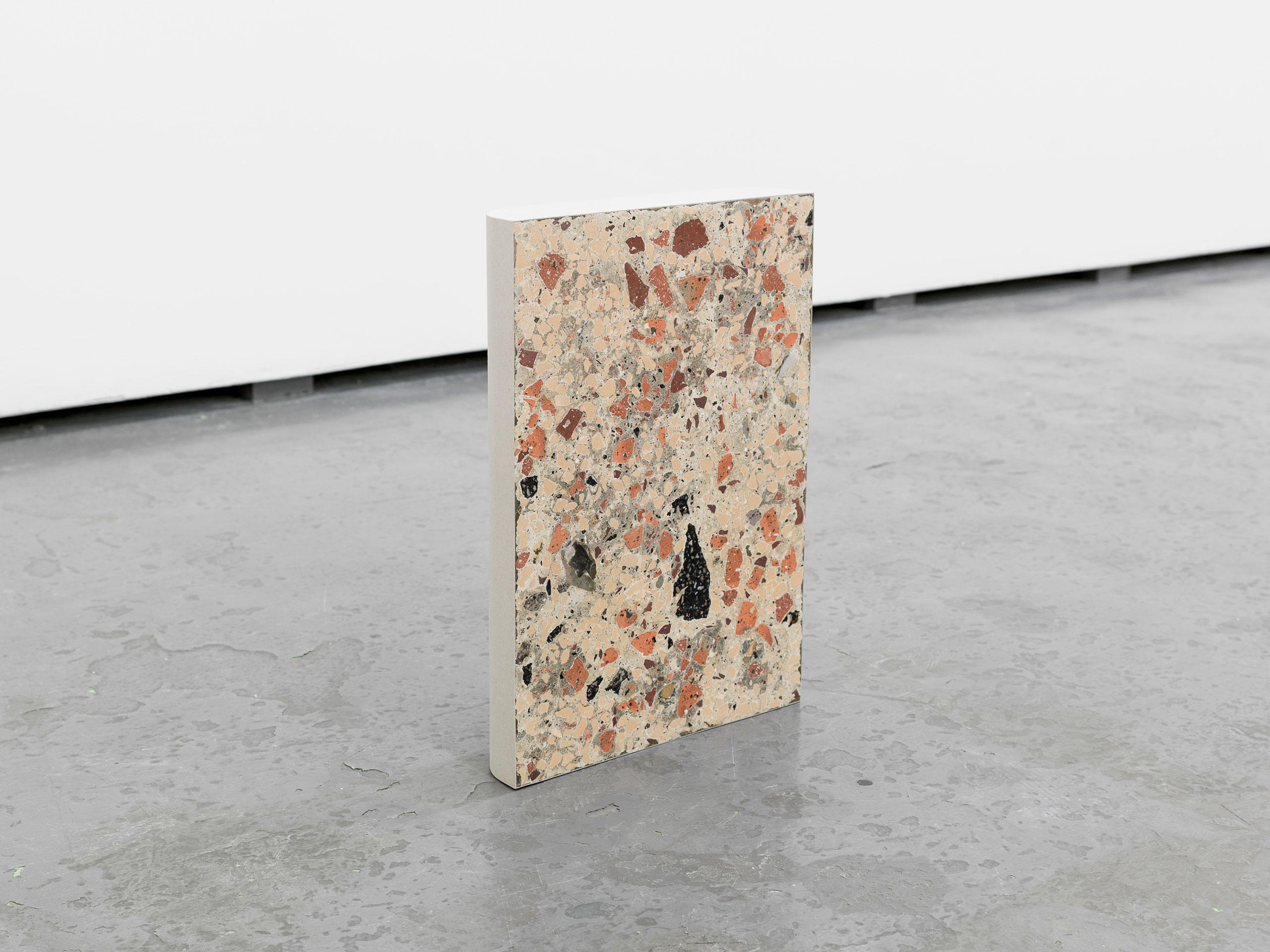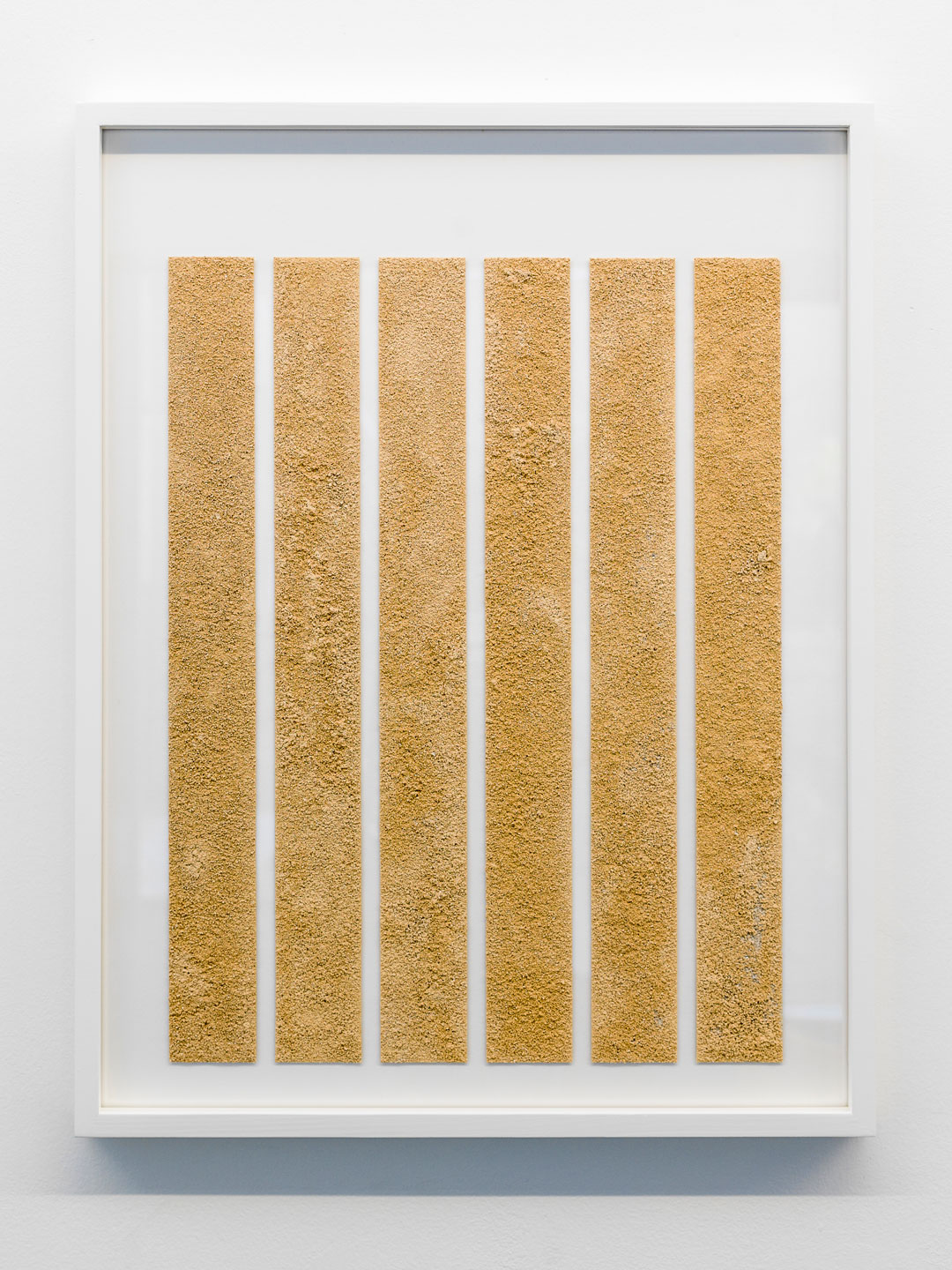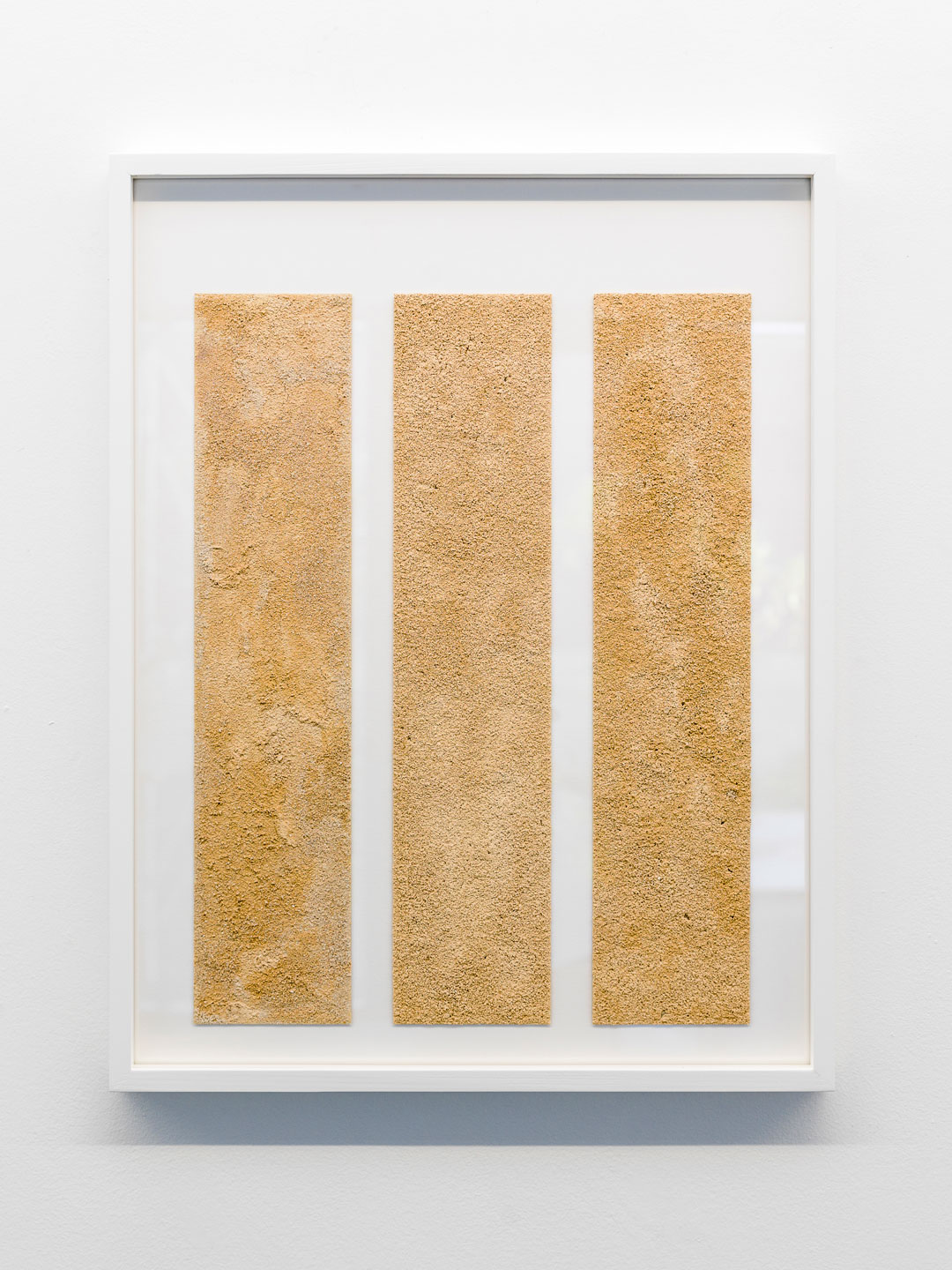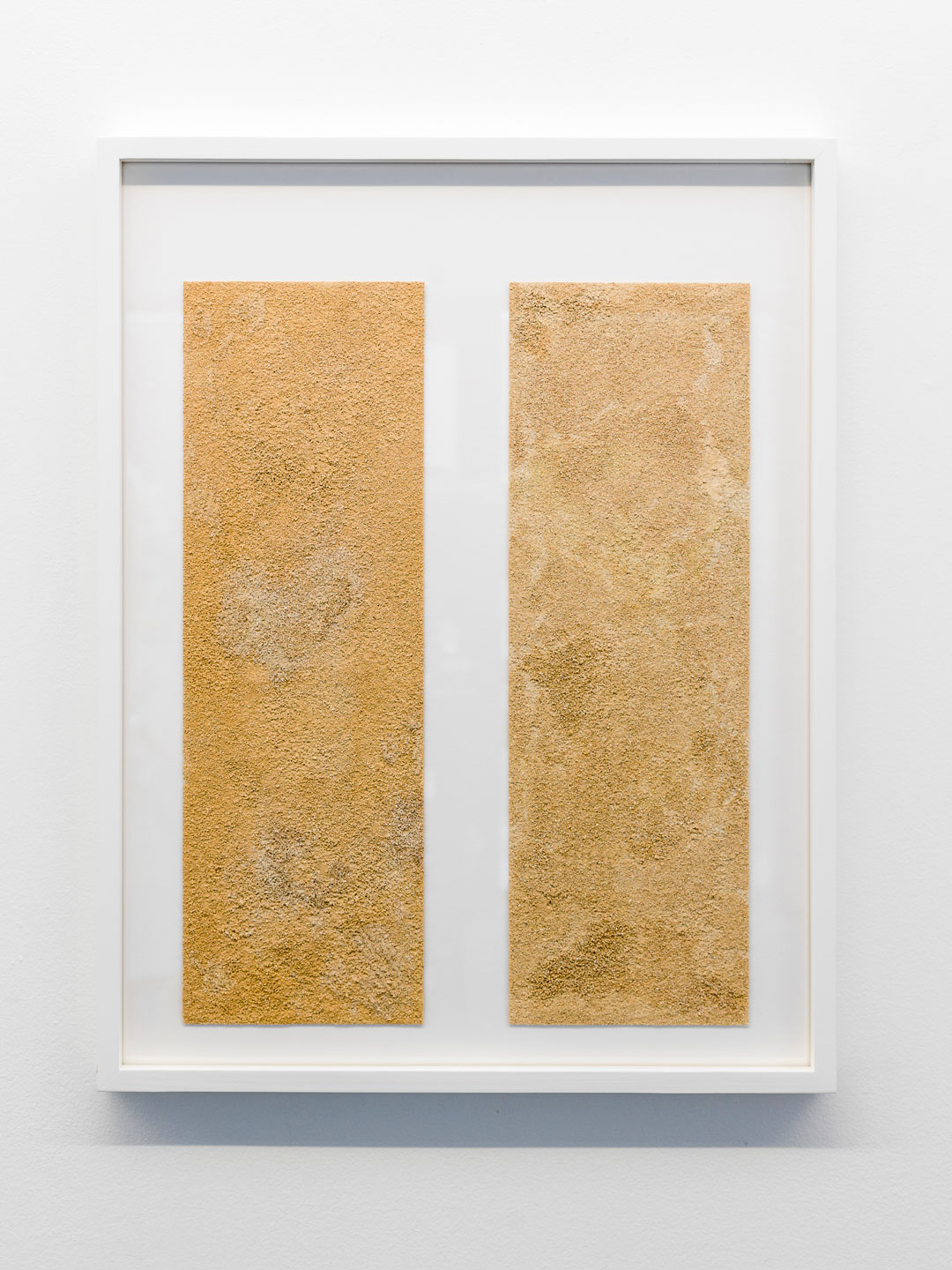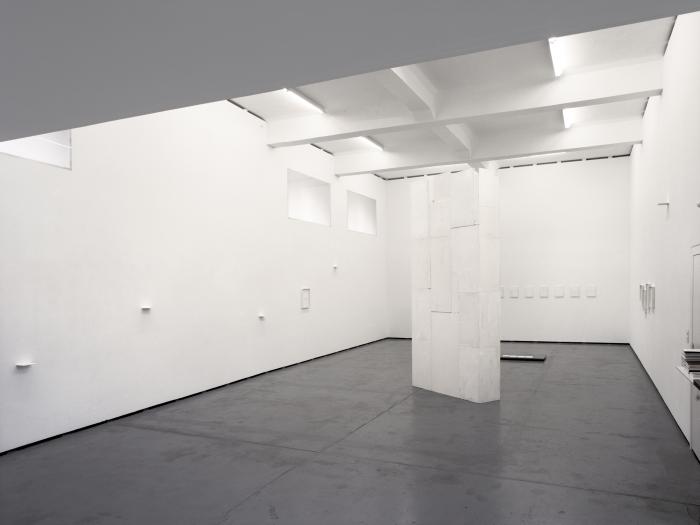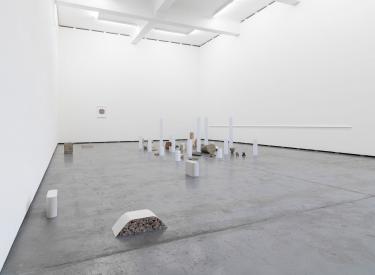
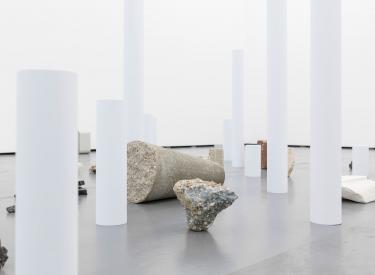
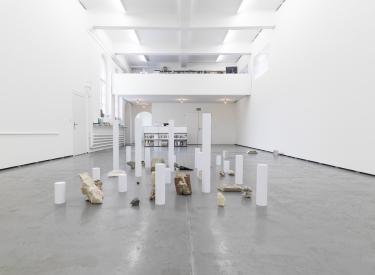
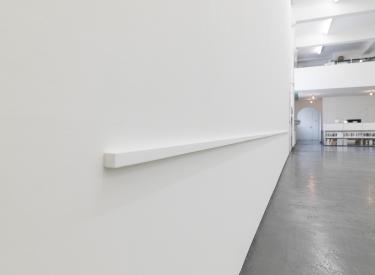
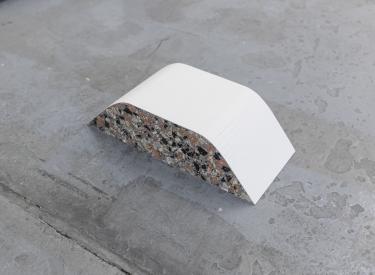
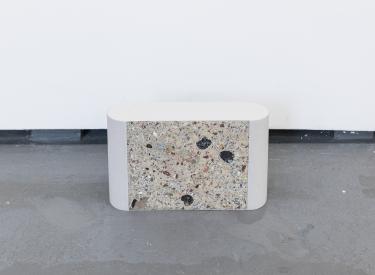
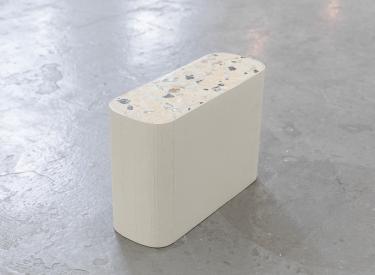

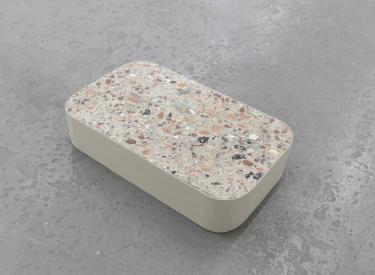
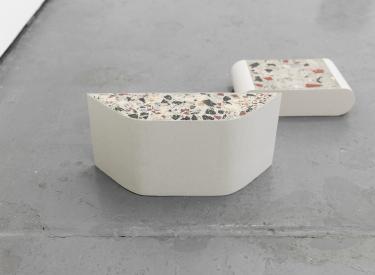
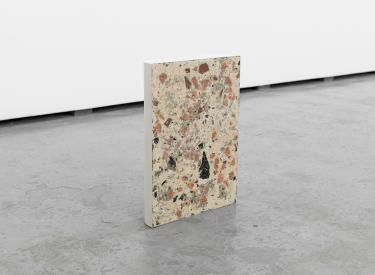
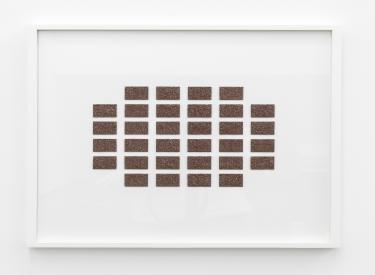
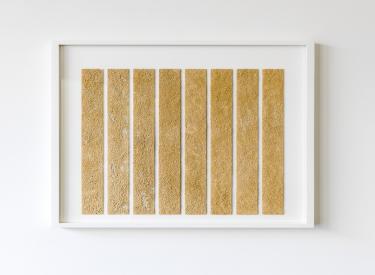
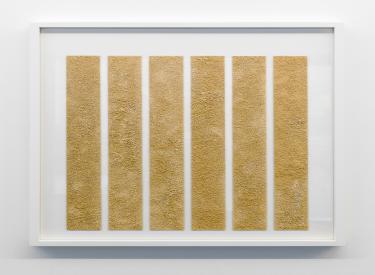
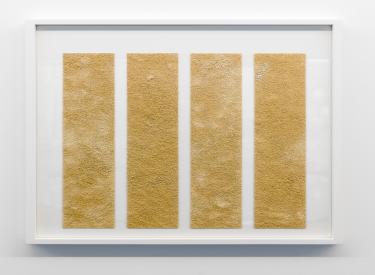

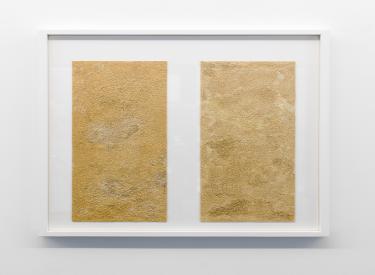
Essay on constructed space
ESSAY ON CONSTRUCTED SPACE, Miriam Sturzenegger’s third solo exhibition at Galerie Bob Gysin, features several new groups of works created during her recent six-month stay in Paris.
On her countless walks in the French capital city, the artist gathered up abandoned building materials found in public areas along pavements and on the margins of construction sites: bricks, asphalt, rock, concrete, mortar, etc. In what amounts to an act of de-contextualisation, the materials were crushed, and the granulates mixed with fluid cement to produce various types of recycled concrete.
Eight Figures archéosphériques are characterised by two contrasting materials, i.e. precisely crafted grey cardboard formwork and the home-made concrete mentioned above. The cardboard encloses architecturally shaped monoliths whose polished surfaces exhibit random colours and patterns that oscillate between micro and macrocosm. The installation explores shifts in material volumes, the dissolution and rearrangement of order, and a potential conceptualisation of materials in terms of conglomerates and volumes. Any once-inherent information has been fragmented, is at least partially lost, or can perhaps be re-contextualised.
In another group, the artist has used the remaining dust – that is, material disintegration reduced to the finest particles – to create thin formations that hover between the two and three-dimensional realms. Working with, shifting and shaping the dust, Sturzenegger has returned to a subject already addressed in Renovieren Renovating, a piece of writing from 2015. While dust can assume any shape or form, any such order is temporary. Here it has been fixed as in a snapshot.
The installation piece, Essay on Constructed Space, consists of slender white cylinders of three different heights that, not least due to their grid layout, provide a structural element. Scattered across the grid are fragments of construction materials. Providing a stark contrast to the sleek shapes of the neutral cylindrical elements, their different shapes express the pre-history, as it were, of each fragment.
Evoking an architectural model, the cylindrical forms and various found objects represent form and material, as well as precise location and dis-location. Inseparable aspects of the built environment, they reflect the ground from which the very materials are extracted that are pushed upwards to giddy heights. Being “manufactured”, the ground is also where any architectural structures will eventually end up. The ground not only provides material support to, but is also the surface onto which architecture inscribes itself in a process of vertical and horizontal arranging and re-arranging, in an ongoing process of sculptural transformation.
Finally, on the gallery’s shorter lateral wall, a white, ledge-like horizontal plaster structure oscillates between object and architecture, vulnerability and dominant power. Making a subtle comment on the gallery’s “white space”, the piece complements the artist’s considerations on the built environment.
